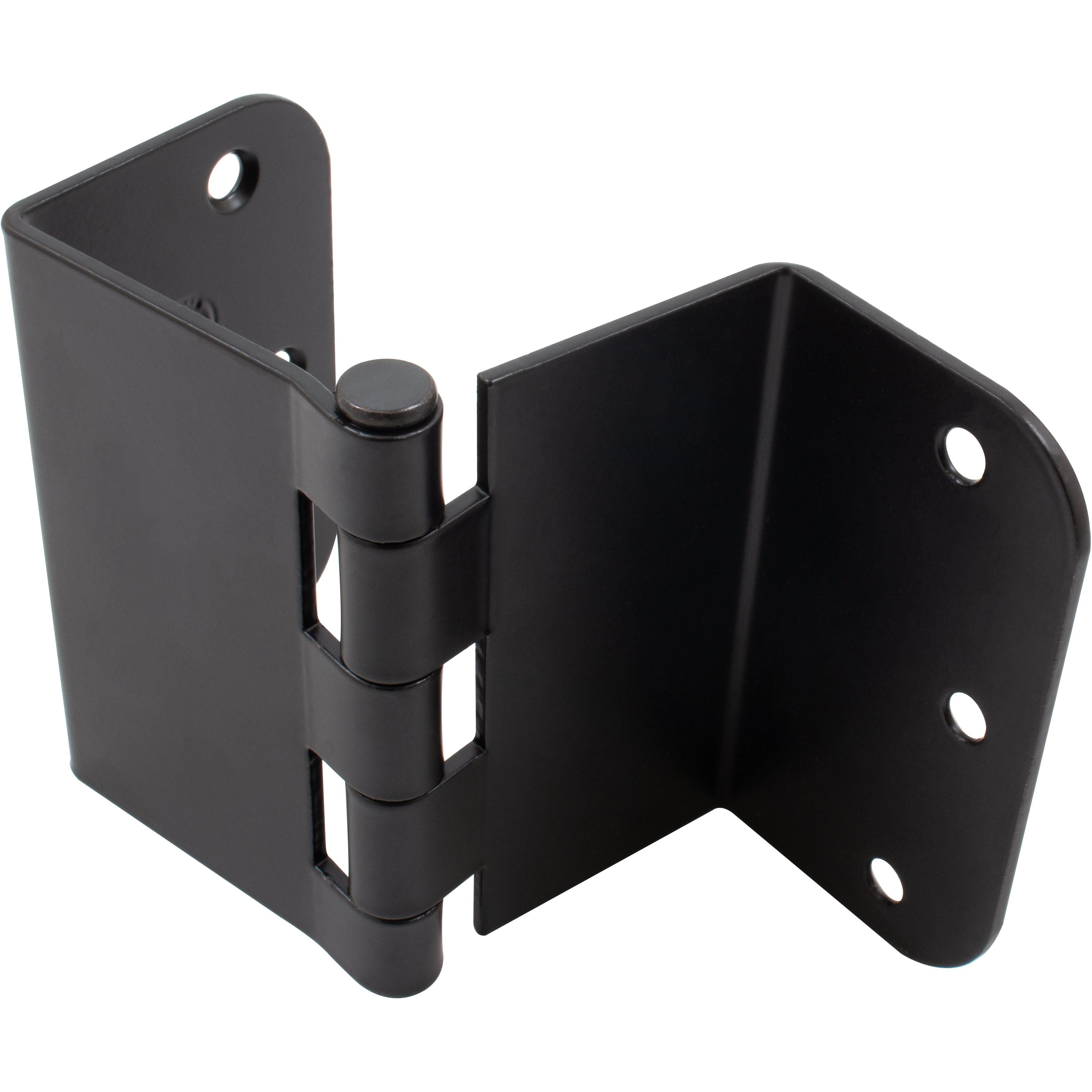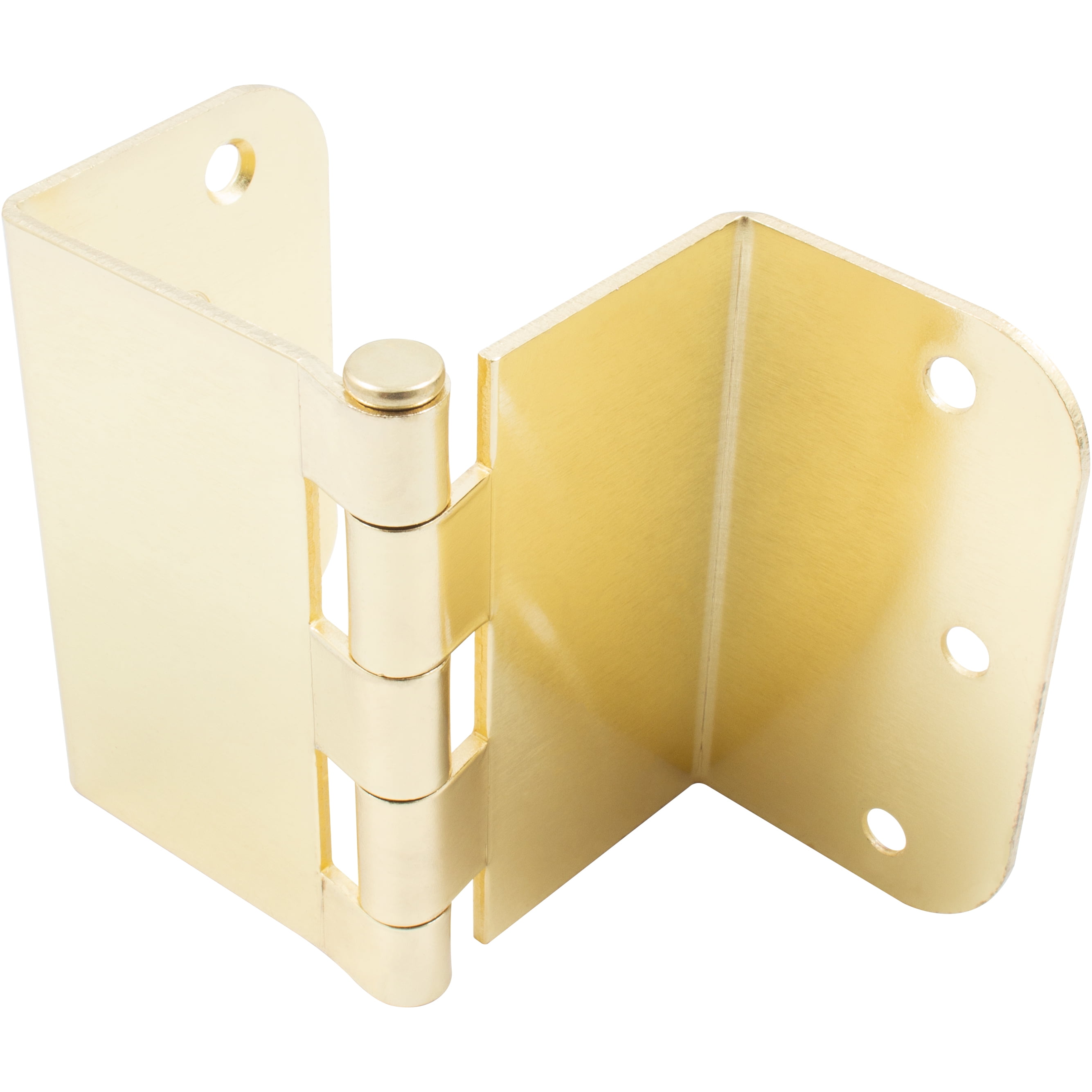Types and Features of Offset Pivot Hinges

Offset pivot hinges offer a unique solution for cabinet door installation, providing a sleek, modern aesthetic and improved functionality compared to traditional hinges. Their ability to create a gap between the door and the cabinet frame allows for various overlay styles and accommodates different door thicknesses and weights. Understanding the different types and features is crucial for selecting the appropriate hinge for a specific application.
Offset pivot hinges are characterized by their placement and functionality, allowing the door to pivot around a central point offset from the door’s edge. This offset creates the gap necessary for full overlay, partial overlay, or inset door styles. The choice of hinge depends on factors like door weight, material, and the desired aesthetic.
Types of Offset Pivot Hinges and Their Key Features, Offset pivot hinges for cabinet doors
The selection of an offset pivot hinge is highly dependent on the cabinet door style and the desired aesthetic. Three main types cater to different design needs: full overlay, partial overlay, and inset. The following table summarizes their key characteristics:
| Feature | Full Overlay | Partial Overlay | Inset |
|---|---|---|---|
| Overlay Style | Door completely covers the cabinet frame | Door partially covers the cabinet frame | Door sits within the cabinet frame |
| Offset Distance | Typically larger offset to allow full coverage | Moderate offset, less than full overlay | Minimal or no offset; hinge often concealed |
| Material | Zinc alloy, stainless steel, aluminum | Zinc alloy, stainless steel, aluminum | Zinc alloy, stainless steel, often with decorative finishes |
| Weight Capacity | Varies greatly depending on hinge design and material; typically from 15 to 50 lbs. per hinge | Similar to full overlay hinges, dependent on design and material | Generally lower weight capacity due to smaller hinge size |
| Installation Method | Usually requires precise drilling and alignment | Requires precise drilling and alignment | More complex installation, potentially requiring specialized tools and techniques |
| Adjustability | Typically offers adjustment for height, depth, and side-to-side alignment | Similar adjustability to full overlay hinges | May have limited adjustability |
Advantages and Disadvantages of Offset Pivot Hinges
Offset pivot hinges offer several advantages over traditional hinges. Their unique design contributes to a cleaner, more modern aesthetic, especially with frameless cabinetry. The offset allows for a consistent gap between the door and the frame, enhancing visual appeal. Furthermore, they often provide a smoother, quieter closing action due to their precision engineering. However, they are generally more expensive than traditional hinges and may require more precise installation. The complexity of installation can increase labor costs and the risk of improper fitting. Additionally, the weight capacity of some offset pivot hinges may be a limiting factor for heavier doors.
Design Considerations for Choosing Offset Pivot Hinges
Choosing the correct offset pivot hinge requires careful consideration of several factors. Door weight is paramount; heavier doors necessitate hinges with a higher weight capacity. The material of the hinge should be chosen based on the desired durability and aesthetic. Stainless steel offers superior corrosion resistance, while zinc alloy provides a more cost-effective solution. The cabinet door style (full overlay, partial overlay, or inset) dictates the type of offset pivot hinge required. The desired level of adjustability is another important factor, as some applications require fine-tuning for perfect alignment. Finally, the installation method and the tools available should be considered before making a selection. For example, a complex inset installation might require specialized tools and expertise.
Installation and Adjustment of Offset Pivot Hinges

Offset pivot hinges offer a unique solution for cabinet door installation, providing a clean, modern aesthetic and allowing for precise door alignment. However, their installation requires careful attention to detail and precision to ensure smooth and reliable operation. This section details the installation process, adjustment techniques, and troubleshooting for common issues.
Step-by-Step Installation Guide
Proper installation is crucial for the longevity and functionality of offset pivot hinges. The following steps Artikel the installation process for both frameless and face frame cabinets. Appropriate tools include a drill with various sized drill bits, a screwdriver (both Phillips and flathead), a level, a measuring tape, and a pencil.
- Mark Hinge Locations: Accurately mark the hinge locations on both the cabinet and the door, ensuring consistent spacing and alignment. Consider the door’s weight and size when determining the optimal number of hinges.
- Pre-Drill Pilot Holes: Pre-drilling pilot holes prevents wood splitting, especially in harder woods. Use a drill bit slightly smaller than the hinge screws to avoid over-tightening.
- Attach Hinge Plates: Securely attach the hinge plates to both the cabinet and the door using the provided screws. Ensure the plates are flush with the surface and aligned perfectly.
- Install the Hinge Barrel: Insert the hinge barrel into the aligned plates, ensuring a snug fit. Some hinges may require a specific orientation; consult the manufacturer’s instructions.
- Hang the Door: Carefully hang the door onto the installed hinges, ensuring it aligns correctly with the cabinet opening.
Adjusting Hinge Alignment and Door Gap
Achieving precise alignment and a consistent door gap is essential for optimal functionality and aesthetics. Slight adjustments may be necessary after initial installation.
- Gap Adjustment: Most offset pivot hinges offer adjustment screws to fine-tune the door gap. These screws typically allow for minor adjustments to increase or decrease the space between the door and the cabinet frame.
- Alignment Adjustment: If the door is misaligned (e.g., tilted or uneven), adjust the hinge plates by slightly loosening the screws, repositioning the plates, and re-tightening. Use a level to ensure perfect alignment.
- Tightening Screws: Ensure all screws are securely tightened to prevent loosening and subsequent misalignment over time. Avoid over-tightening, which could strip the wood or damage the hinges.
Troubleshooting Common Problems
Even with careful installation, problems can arise. This section provides solutions for common issues.
- Misalignment: Check for loose screws, uneven surfaces, or incorrectly positioned hinge plates. Re-tighten screws, adjust plates as needed, and re-check alignment using a level.
- Squeaking: Apply a small amount of lubricating oil or silicone spray to the hinge barrel and moving parts. This reduces friction and eliminates squeaking sounds.
- Loose Hinges: Check for stripped screw holes. If found, use wood filler to repair the holes, allow it to dry completely, and re-drill pilot holes before re-installing the screws. Alternatively, consider using slightly larger diameter screws.
- Door Binding: Binding indicates the door is rubbing against the frame. Adjust the hinge alignment or plane the cabinet frame to eliminate the interference.
Installation Scenarios: Frameless vs. Face Frame Cabinets
Installation techniques vary slightly depending on the cabinet type.
- Frameless Cabinets: In frameless cabinets, the hinges are mounted directly onto the cabinet sides. Precise measurements and alignment are critical due to the lack of a face frame for support and alignment reference points.
- Face Frame Cabinets: Face frame cabinets provide a built-in frame, simplifying alignment. The hinges are mounted on the face frame and the cabinet door, offering a more straightforward installation process.
Offset Pivot Hinge Applications and Considerations: Offset Pivot Hinges For Cabinet Doors

Offset pivot hinges offer a unique solution for cabinet door installation, providing a clean, modern aesthetic and improved functionality. Their suitability, however, depends on several factors, including the door material, cabinet type, and desired level of durability. Understanding these factors is crucial for successful application and long-term performance.
Suitability for Different Cabinet Door Materials
The robust design of offset pivot hinges makes them compatible with a wide range of cabinet door materials. For wood doors, the hinges typically require pre-drilled holes for secure mounting. The strength of the hinge allows for the use of heavier wood species without compromising stability. Glass doors, often more delicate, benefit from the hinge’s ability to support weight evenly, minimizing stress points. Metal doors, whether aluminum or steel, can also be successfully fitted with offset pivot hinges, providing a secure and durable connection. The hinge’s design should be chosen to match the weight and thickness of the specific material to ensure optimal performance and longevity.
Offset Pivot Hinge Performance in Various Cabinet Applications
Offset pivot hinges demonstrate consistent performance across various cabinet applications. In kitchen cabinets, their ability to handle heavier doors and provide smooth, controlled movement makes them a popular choice. The clean lines of the hinges contribute to a sleek, modern kitchen design. Bathroom vanities, often featuring smaller, lighter doors, also benefit from the hinge’s precise alignment and ease of adjustment. Custom cabinetry projects, requiring highly tailored solutions, find offset pivot hinges versatile enough to meet specific design needs and material specifications. The hinges’ ability to handle various door weights and sizes makes them a dependable option for diverse custom installations.
Maintenance Requirements for Offset Pivot Hinges
Regular maintenance is key to ensuring the longevity and optimal performance of offset pivot hinges. Periodic lubrication with a light machine oil, applied to the hinge’s moving parts, will reduce friction and prevent wear. This simple step can significantly extend the lifespan of the hinges. Inspecting the hinges for any signs of loosening or damage is also recommended. Tightening any loose screws and addressing any damage promptly will prevent further issues. Avoiding excessive force when opening and closing cabinet doors will also contribute to the hinges’ long-term durability. By following these simple maintenance guidelines, homeowners can ensure their offset pivot hinges continue to function smoothly and reliably for years to come.
